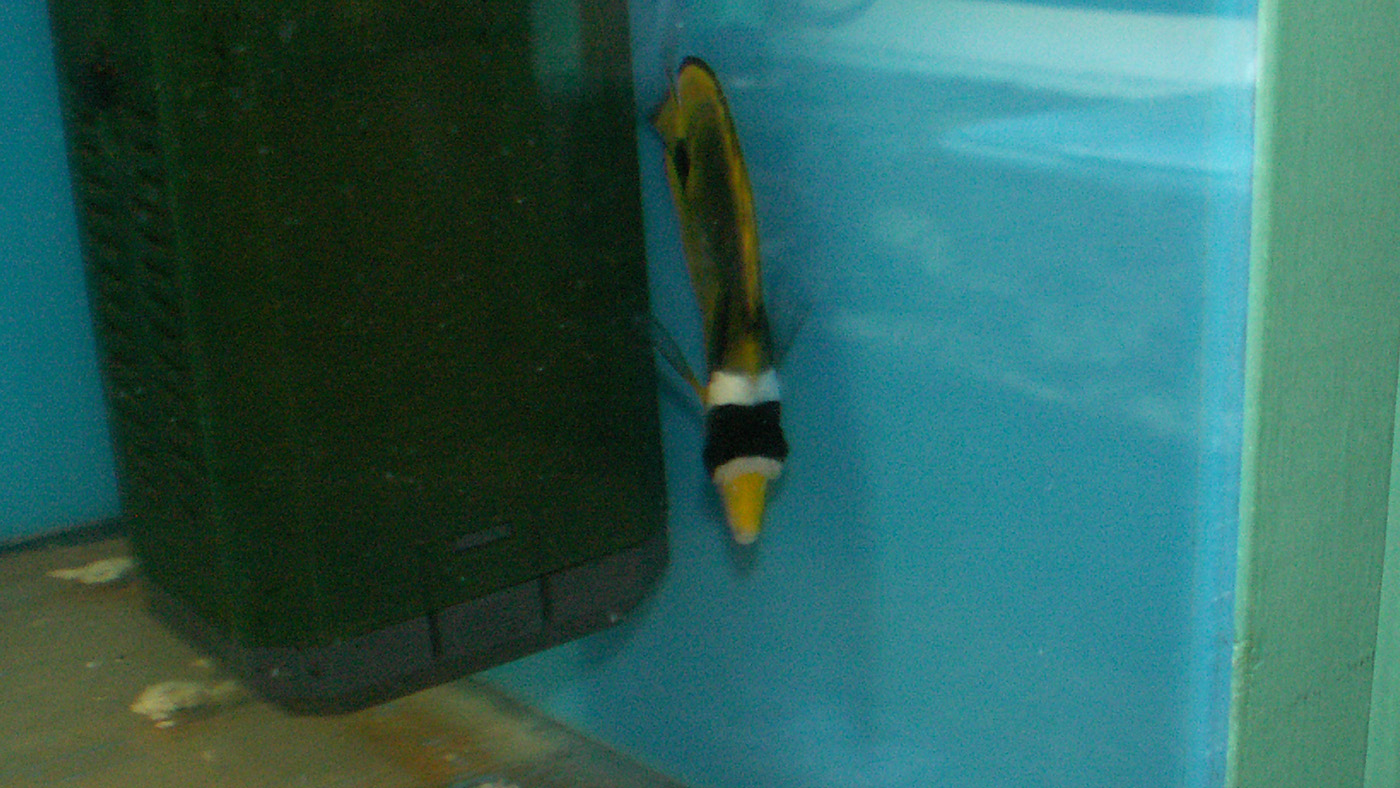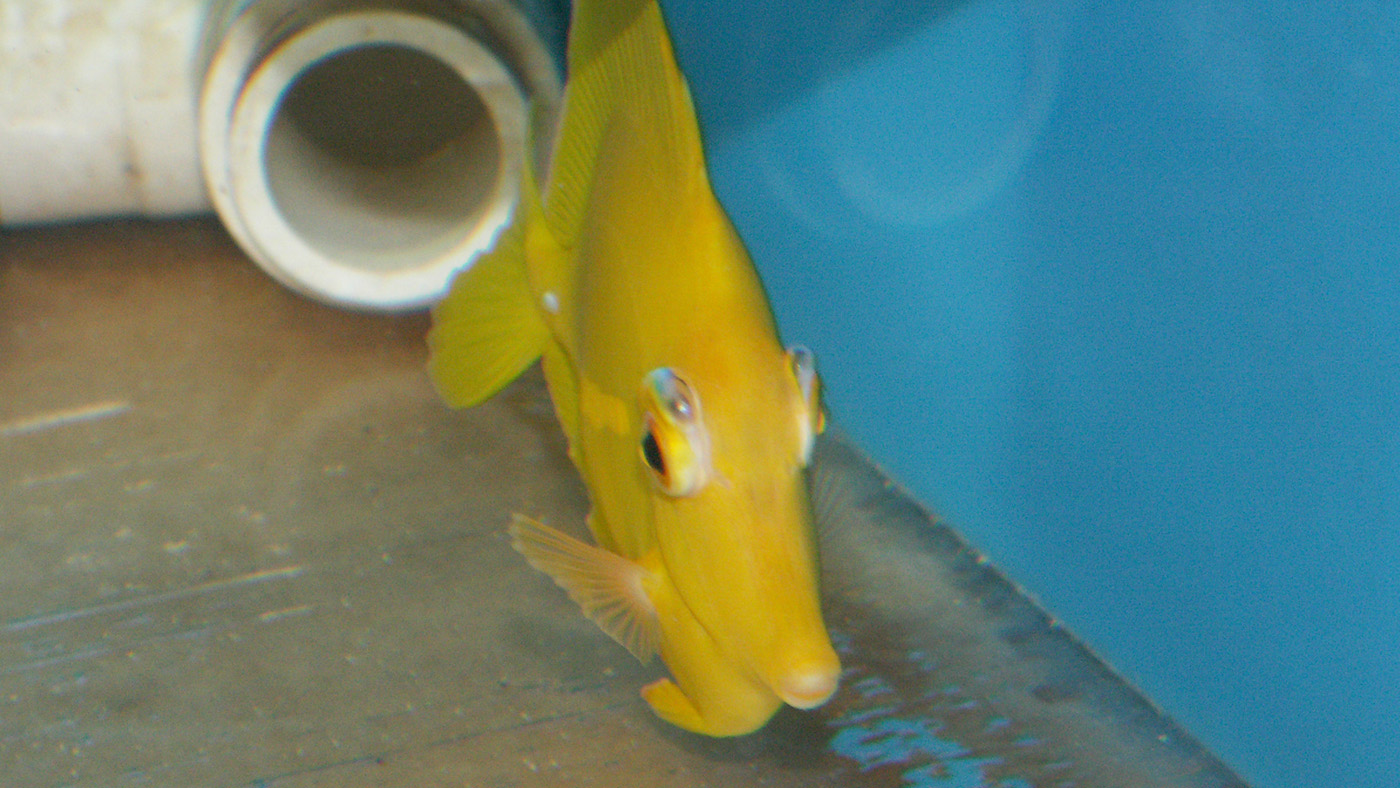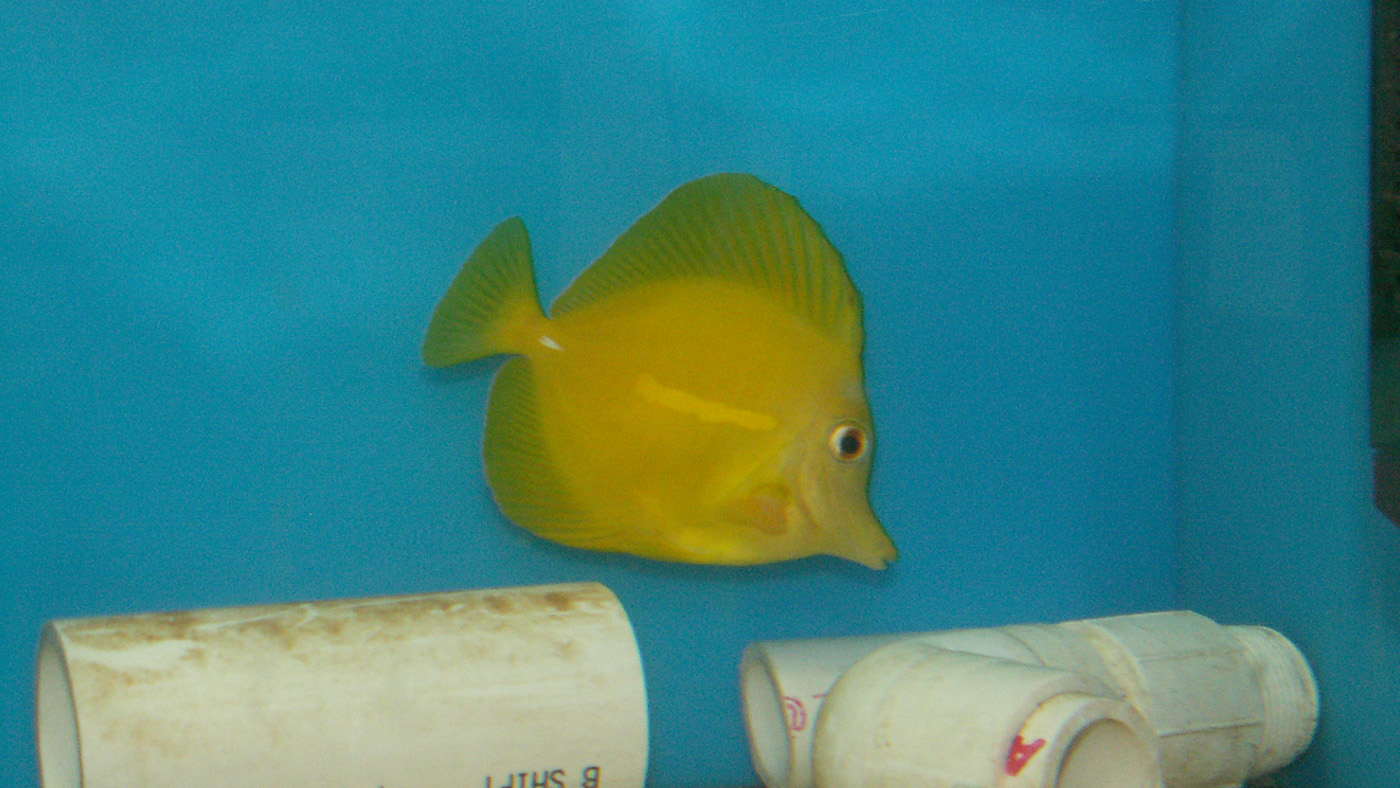Effectively treating bacterial diseases in saltwater fish is more complex than in freshwater fish. Through experience and experimentation in trying to treat many bacterial problems in saltwater, I have developed a very effective procedure that will cure the most common bacterial problems in marine fish.


Bacterial problems often occur within two weeks of being introduced into a new aquarium. The most common problem is cloudy-eye with angelfish and butterflyfish, but it can also occur in other marine fish. If the cloudy-eye goes untreated, it can turn into pop-eye. Fish injuries from scrapes or aggressive tank mates can also open up to bacterial infections.
First, you will need to set up a quarantine tank if you do not have one set up already. A quarantine tank can be any size, but usually 10 to 30 gallons depending on the size of your fish. The smaller the quarantine tank, the less medication you will have to use and the fewer gallons of water you will have to change out. Filtration can be as simple as a sponge or an external hang-on-the-back filter. No activated carbon must be used in the filtration, as it will pull medications out of the solution.
In the quarantine tank, reduce the salinity to 1.011 to 1.012. Antibiotics in full-strength seawater are ineffective. Remove the infected fish to the quarantine tank. Don't worry about the difference in salinity, as I have no problem with any fish transitioning to this low salinity.
My antibiotic of choice for marine fish is a sulfa-based medication like Mardel's Maracyn Plus (Sulfadimidine [aka. Sulfamethazine], Trimethoprin), or Triple Sulfa (Sulfadiazine, Sulfamethazine, Sulfamerazine). The medication must be double the dose of what is recommended on the package for freshwater fish. Add the double dose of antibiotic every day for three days, and then do a near 100% water change with the new water being the same salinity (1.011 to 1.012). Treat again for three days, with a near complete water change after every three treatments. Usually, after five days of treatment, you should notice that the infection has improved; in some cases, it may look completely normal. I recommend you continue treating for at least 7 to 10 treatments or two days after the fish shows no sign of infection.


After completing the treatments, do a near-complete water change. During the next two days, slowly increase the salinity to that of your display tank. I noticed some unexpected fish loss (mostly with angelfish) a few days after the fish were returned to full-strength seawater when a slow acclimation process was not observed. Keep an eye on the fish for the next few days, ensuring no re-infection occurs, then return the fish to your display tank.
With this treatment procedure, I have cured most marine fish, including a severe case of pop-eye in a Long-nose Butterflyfish (Forcipiger flavissimus). These procedures were developed over several years of treating marine fish with many different antibiotics and salinity manipulation.